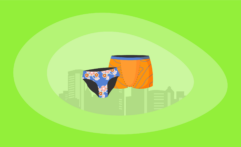12 Most Sustainable Handbag Brands: The Conscious Consumer’s Guide
Affiliate Disclosure
Hey fellow impactful ninja ?
You may have noticed that Impactful Ninja is all about providing helpful information to make a positive impact on the world and society. And that we love to link back to where we found all the information for each of our posts.
Most of these links are informational-based for you to check out their primary sources with one click.
But some of these links are so-called "affiliate links" to products that we recommend.
Why do we add these product links?
First and foremost, because we believe that they add value to you. For example, when we wrote a post about the environmental impact of long showers, we came across an EPA recommendation to use WaterSense showerheads. So we linked to where you can find them. Or, for many of our posts, we also link to our favorite books on that topic so that you can get a much more holistic overview than one single blog post could provide.
And when there is an affiliate program for these products, we sign up for it. For example, as Amazon Associates, we earn from qualifying purchases.
What do these affiliate links mean for you?
First, and most importantly, we still only recommend products that we believe add value for you.
When you buy something through one of our affiliate links, we may earn a small commission - but at no additional costs to you.
And when you buy something through a link that is not an affiliate link, we won’t receive any commission but we’ll still be happy to have helped you.
What do these affiliate links mean for us?
When we find products that we believe add value to you and the seller has an affiliate program, we sign up for it.
When you buy something through one of our affiliate links, we may earn a small commission (at no extra costs to you).
And at this point in time, all money is reinvested in sharing the most helpful content with you. This includes all operating costs for running this site and the content creation itself.
What does this mean for me personally?
You may have noticed by the way Impactful Ninja is operated that money is not the driving factor behind it. It is a passion project of mine and I love to share helpful information with you to make a positive impact on the world and society. However, it's a project in that I invest a lot of time and also quite some money.
Eventually, my dream is to one day turn this passion project into my full-time job and provide even more helpful information. But that's still a long time to go.
Stay impactful,
Amid growing concerns about the textile industry’s environmental impact, there is pressure to find greener clothes and accessories for your wardrobe, from a dependable tote to a stylish clutch. Unfortunately, fashion greenwashing makes it harder for you and all other consumers to figure out which clothing brands offer the most eco-friendly garments and accessories. So, we had to ask: Which are the most sustainable handbag brands?
The most sustainable handbag brands are HYER GOODS, BOTTLETOP, and O My Bag, which prioritize reclaimed and recycled materials, reduce waste, and strive for circularity. In addition, Nisolo and Elvis & Kresse reduce carbon emissions and adhere to ethical manufacturing.
Whether you are searching for an everyday messenger or a special evening bag for your next party without negatively impacting the soil, the water, the animals, and other people, there is a brand for you. So, let’s keep reading to learn more about the most sustainable handbag brands and how they ensure sustainable, ethical practices.
Here’s How We Selected the 12 Most Sustainable Handbag Brands
Handbags can be one of the higher impact and less sustainable clothing accessories due to their conventional use of leather, which could be both high impact and unethical.
“Sustainable: The ability to be maintained at a certain rate or level | Avoidance of the depletion of natural resources in order to maintain an ecological balance”
Oxford Dictionary
The brands on this list were chosen based on their commitment and actions to promote sustainable practices while reducing the environmental impacts of the textile industry.
They are transparent about their materials, processes, and workforce management within their supply chain.
Some brands focus their efforts on reducing waste and optimizing natural resources while others strive to reduce the carbon footprint of their clothes.
All of these brands share the commitment to reshape the textile industry toward a more sustainable and Earth-friendly sector.
These Are the 12 Most Sustainable Handbag Brands
Most Sustainable Handbag Brands
Overall, these handbag brands are sustainable. Yet, they take various approaches to reduce environmental impacts and uphold ethical standards. Let’s dive into each brand and find out more.
HYER GOODS: Handbags Made With Deadstock
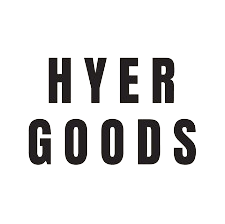

“By upcycling “trash” we eliminate the massive energy footprint needed to cultivate land, livestock, crops and fertilizers, while simultaneously reducing the amount of waste being sent to landfill. ”
HYER GOODS
🌎
How do they ensure their sustainability?
HYER GOODS ensures their sustainability by rescuing yarns and fabrics abandoned by the fashion industry and turning them into beautiful bags, clothing items, and accessories. For example, they sell Luxe Mini Bucket Bag cut from leather leftovers. Their entire collection of bags, wallets, jackets, and beanies are crafted from deadstock, surplus, and leftovers, including luxury leftover leather, deadstock leather, locally sourced abandoned wool yarns, and deadstock canvas. Regarding their leather materials, HYER GOODS prioritizes using animal skins that are vegetable-tanned and made in Italy, utilizing some of the world’s best leather production methods. Also, all of the ready-made leather leftovers they source are tested for chrome, ensuring the leather is safe to wear. Beyond reducing carbon emissions through diverting textile waste from landfills, HYER GOODS offsets 100% of their carbon emissions from shipping. Lastly, they partner with EcoCart to support Global Sustainable Infrastructure Projects, investing in multiple sustainable infrastructure carbon offset projects, like wind and solar farms, biogas, and hydropower.
🌐
How do they ensure their ethics?
HYER GOODS traces most of their supply chain and audits their final stage of production.
🤝
Are they part of any giving-back programs?
HYER GOODS has pledged to donate 1% of net sales on their site to support organizations that foster the physical and mental well-being of people in need. Some of the previous recipients of their donations are the Malala Fund, WHO, No Kid Hungry, and The Okra Project.
🛍️
What is their product range?
- Best for: menswear, womenswear
- Product range: bags, wallets, blazers, beanies, scarves
- Price range: $$$
- Size range: XS–L
BOTTLETOP: Handbags Made Ethically With Upcycled, Recycled, and Certified Materials
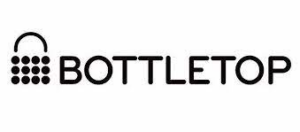

“I would always encourage people to ask the tough questions of brands that they love and would want to see improving, and for everyone to use their actual voice and their digital voice to make noise.”
Cameron Saul, Co-founder of BOTTLETOP
🌎
How do they ensure their sustainability?
BOTTLETOP ensures sustainability by sourcing a high proportion of eco-friendly materials. Specifically, they opt for upcycled and recycled materials to help tackle today’s waste problems. Their signature chain mail fabric, such as in their Amazona Mini Enamel clutch, is woven with upcycled aluminum rings collected from the streets of Brazil. BOTTLETOP also upcycles stainless steel from deconstructed illegal firearms that have been seized by local authorities in Central America. Furthermore, the brand sources food and plastic waste to create handbag materials. Regarding leather—the conventional material for luxurious handbags—BOTTLETOP ensures that they only source animal hides from sustainable farms and has them processed in a tannery that is rated Gold standard by the Leather Working Group (LWG). Further down the life-cycle in the manufacturing stage, BOTTLETOP reduces their energy use and climate impact by making products by hand.
🌐
How do they ensure their ethics?
BOTTLETOP traces most of their supply chain, including the final production stage, and visits their supplier regularly. Additionally, they created the first certified ‘Zero Deforestation Leather’ supply chain with the National Wildlife Federation. They also advocated for consumers and brands in the fashion industry to demand to know the provenance of their leather in order to help ensure both animal welfare and traceability, supporting the protection of the Amazon rainforest and other natural environments.
🤝
Are they part of any giving-back programs?
BOTTLETOP has a giving-back program through the BOTTLETOP Foundation, which supports grassroots health education charities that empower young people to protect themselves. BOTTLETOP also launched the #TOGETHERBAND campaign in partnership with the UN Foundation in 2019, with a mission to generate global awareness and action supporting the 17 UN Sustainable Development Goals. The campaign has generated over 9 billion impressions and has over 1,000 ambassadors from around the world. They now hold their atelier and training programs in Brazil and Nepal. Additionally, BOTTLETOP partners with two Nepalese organizations to support female victims of human trafficking.
🛍️
What is their product range?
- Best for: womenswear
- Product range: bags, purses, pouches, belts, bag accessories
- Price range: $$
- Size range: n/a
O My Bag: Eco-Leather Handbags Made by a Social Enterprise
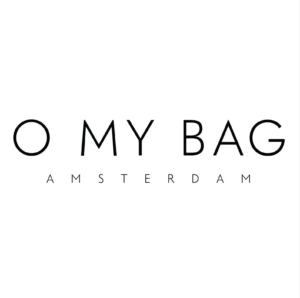
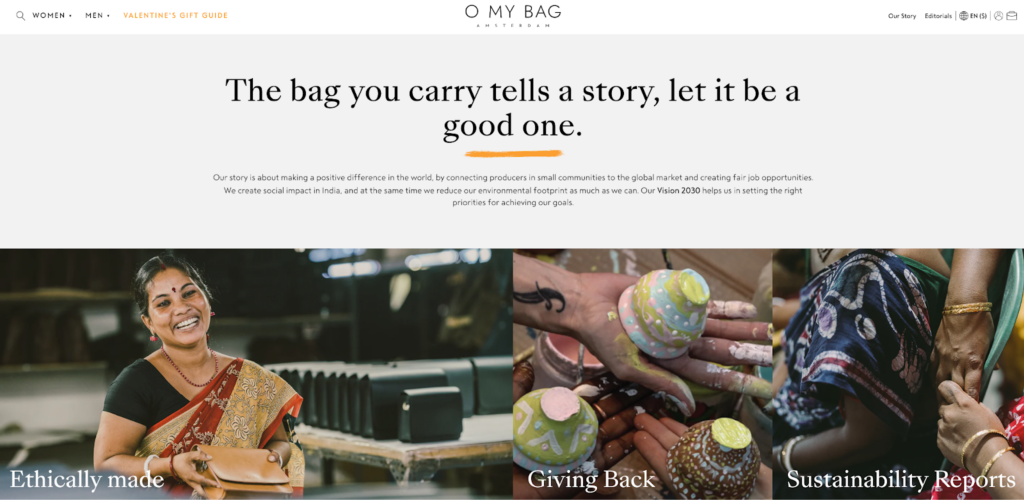
“We create social impact in India, and at the same time we reduce our environmental footprint as much as we can. ”
O My Bag
🌎
How do they ensure their sustainability?
O My Bag prioritizes sustainability by reducing and offsetting their carbon emissions. Firstly, they focus on lowering carbon emissions, which they call “in-setting”. The carbon reduction incentives include increasing sea shipments, replacing the fossil fuels used for their sea shipments with biofuels, limiting business travel, flying on Sustainable Aviation Fuel for business trips, and searching for a more sustainable hardware producer. For example, in 2022, sea shipment accounted for 36% of their total shipment, a significant increase from 16% in 2021. Secondly, the emissions that cannot be prevented are offset in the Indian clean cooking stoves project of FairClimateFund. Additionally, O My Bag lowers their impact by opting for durable materials sourced and produced sustainably. The main textile used in their bags is premium quality leather naturally tanned without using chromium, reducing chemical and water usage in production. They work with Leather Working Group (LWG) certified tanneries to ensure best practices in processing their raw materials. To accommodate some customers’ choice not to purchase animal products, they produce a vegan bag collection made with AppleSkinTM. O My Bag also uses low-impact GOTS-certified organic cotton and GRS-certified recycled cotton for the lining of their handbags. Regarding packaging, O My Bag orders are sent in cardboard boxes made from recycled materials and are certified by the Forest Stewardship Council (FSC). Lastly, O My Bag actively reduces waste with a Second Chance Collection, selling Perfectly Imperfect and Pre-Loved items that they take back from consumers, diverting bags away from landfills for a longer lifespan.
🌐
How do they ensure their ethics?
O My Bag ensures their ethics by committing to fair jobs and living wages. They also pay a living wage premium, which tripled from 2021 to 2022. Additionally, they bind their suppliers to a Code of Conduct that covers all of the ILO’s Fundamental Principles and Rights at Work. They also trace most of their supply. The final production stage is also certified by Social Accountability International – SA8000 and the WFTO Guarantee System.
🤝
Are they part of any giving-back programs?
O My Bag donates 1% of their annual revenue to social impact projects in and around Kolkata, India. These projects focus on women’s empowerment, education, and environmental innovation.
🛍️
What is their product range?
- Best for: womenswear, menswear
- Product range: bags, accessories
- Price range: $$$
- Size range: n/a
Nisolo: Carbon-Neutral Handbags From an Accountable and Transparent Brand

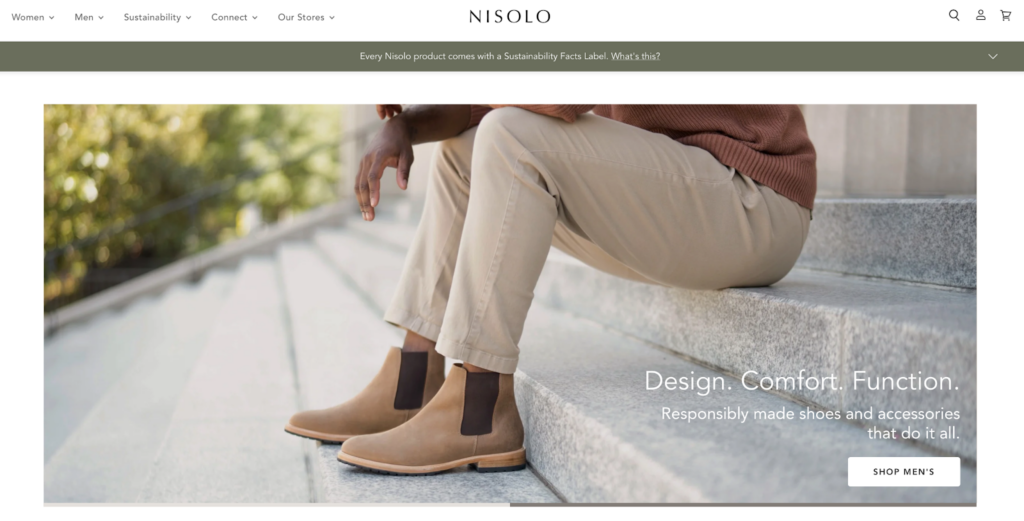
“As a brand focused on sustainability, we’re far from perfect. To hold ourselves more accountable in hopes the industry will begin to do the same, we’re raising the bar for transparency to an unprecedented level. ”
Nisolo
🌎
How do they ensure their sustainability?
Nisolo ensures their sustainability by reducing their impacts while working toward fixing the fashion industry. They focus on five critical areas: a living wage for all workers, net zero carbon emissions, transparency, accountability, and collaboration. Specifically, they pursue the balance between their carbon emissions and offsets. Firstly, Nisolo strives to reduce their carbon emissions throughout the life-cycle of their leather footwear and accessories. They opt for recycled and upcycled materials, sourcing synthetic materials made from recycled water bottles and leather as an economic by-product of the meat industry. Further down the life-cycle in the manufacturing stage, they use renewable energy for a significant percentage of their production. At the end of the product’s life-cycle, they facilitate recycling and responsible disposal through their takeback program with Soles4Souls, further reducing the life-cycle’s environmental impacts. Since 2018, Nisolo has offset all the carbon emissions that they haven’t managed to cut by partnering with Ecosphere+ to invest in forest conservation in the Peruvian Amazon—an offsetting project verified by Climate Neutral. Lastly, they are a carbon-neutral certified brand.
🌐
How do they ensure their ethics?
Nisolo ensures their ethics by upholding all their 1st tier factories to their Supplier Code of Conduct, which covers all of the ILO’s Fundamental Principles and Rights at Work. They ensure that every producer in their 1st tier factories is paid a living wage by monitoring individual living wages and tracking suppliers’ lowest wages. Nisolo also monitors health and safety issues with an internal procedure. Moreover, they are fully transparent about their impacts with their sustainability facts labels so that consumers can see the carbon footprint and the workforce involved with each product they purchase. Regarding animal welfare, Nisolo is a member of the Leather Working Group, which promotes sustainable environmental practices in the leather industry.
🤝
Are they part of any giving-back programs?
Nisolo founded The Lowest Wage Challenge in collaboration with another fashion label, ABLE, to challenge brands to share their lowest wages and strive toward paying their workers a living wage throughout their supply chains.
🛍️
What is their product range?
- Best for: menswear, womenswear
- Product range: shoes, bags, wallets, belts, socks, accessories
- Price range: $$$
- Size range: S–L
Elvis & Kresse: Luxurious Handbags Made From Rescued Materials

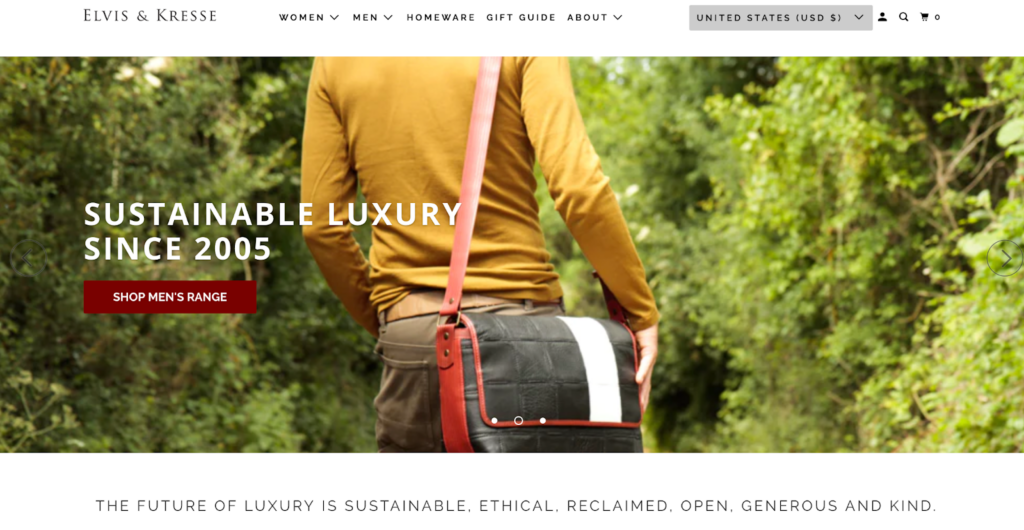
“We create stunning lifestyle accessories by transforming seemingly useless wastes and combining them with highly skilled, traditional craftsmanship.”
Elvis & Kresse
🌎
How do they ensure their sustainability?
Elvis & Kresse prioritizes sustainability by sourcing eco-friendly materials. Their collection is made with rescued materials, originally from London’s decommissioned fire hoses and later from the fashion industry’s leather offcuts. The brand collects 15 different waste streams to make their products, including fire hoses, parachutes (for silk), printing blankets, leather offcuts, coffee sacks, shoe boxes, tea sacs, and auction banners, to name a few. For example, the exterior of the Fire & Hide Class Tote is made with a combination of rescued leather and genuine decommissioned British fire hoses, with the lining made from reclaimed textile from Burberry Mills and the handles made with genuine decommissioned British fire hoses. This same tote is also packaged in a reclaimed parachute silk bag. Further down the life-cycle in the manufacturing stage, Elvis & Kresse makes all their products by hand, reducing their climate impact.
🌐
How do they ensure their ethics?
Elvis & Kresse traces all of their supply chain and ensures payment of a living wage in some of their suppliers.
🤝
Are they part of any giving-back programs?
Elvis & Kresse donates 50% of profits from their Fire-Hose Range to The Fire Fighters Charity. They also make monetary donations to various organizations, including Barefoot College, WWF, Help for Heroes, Comic Relief, and the British Forces Foundation. Through an initiative in which they made shopping bags for the British supermarket chain Sainsbury’s from old coffee sacks, they have also donated to projects that support coffee growers via CafeDirect, the Costa Foundation, David Williamson Rwanda Foundation, Bettys, Taylors, and Union Hand Roasted.
🛍️
What is their product range?
- Best for: womenswear, menswear
- Product range: bags, wallets, belts, laptop cases, laptop bags, notebooks, pencil cases, cufflinks, wrist bands
- Price range: $$$
- Size range: XS–XL
Santos by Monica: Handmade Handbags Produced Locally in the US
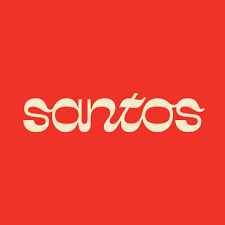
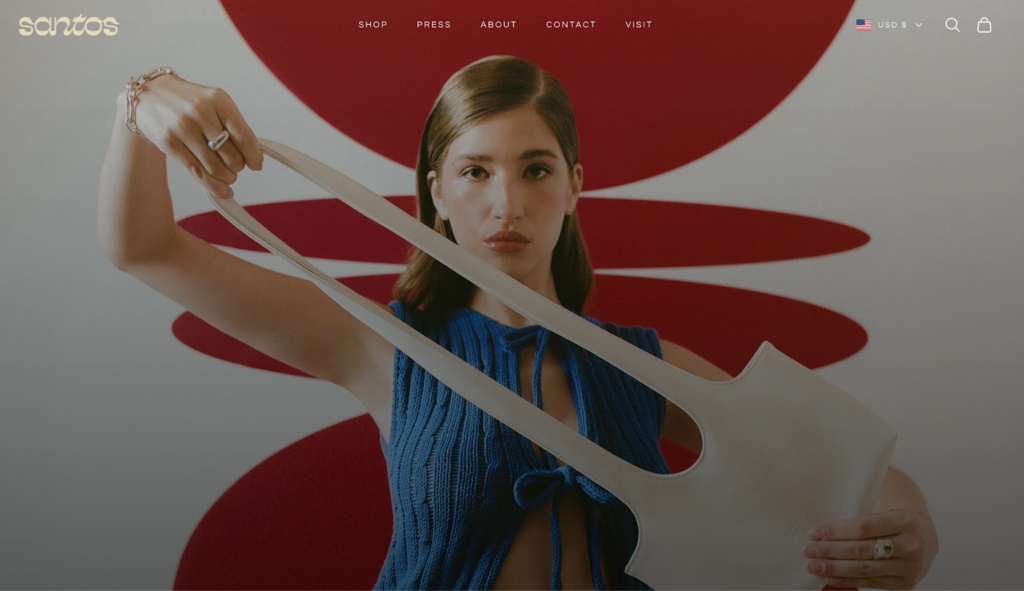
“We believe in incorporating biomaterials, local production, and timeless design to create products that not only look good but also do good for the planet.”
Santos by Monica
🌎
How do they ensure their sustainability?
Santos by Monica ensures their sustainability by sourcing biomaterials to make their bags. The cactus leather sourced by Santos by Monica for their handbags comes from rainfed-only cacti, lowering the water usage in production (80% less water than animal hides). These bags are lined with 100% organic cotton. Beyond handbags, Santos by Monica also sells Ready-To-Wear clothing made with TENCELTM Lyocell, one of the most sustainable fabrics. Further down the life-cycle in the manufacturing stage, they put an emphasis on small batches and made-to-order production, promoting a slow-paced, less wasteful fashion practice. The brand also opts to manufacture locally to reduce their carbon footprint. Regarding packaging, Santos by Monica opts for eco-friendly materials, including compostable mailers, biodegradable paper hang tags, organic hemp cords, and FSC-certified paper packaging tape.
🌐
How do they ensure their ethics?
Santos by Monica ensures their ethics by partnering with manufacturers and suppliers that pay high-end, above-market wages. They also visit their manufacturing factories on a weekly basis, ensuring that workers are working in safe, healthy conditions.
🤝
Are they part of any giving-back programs?
Santos by Monica plants a tree for every handbag sold. In their partnership with One Tree Planted, they help to recover endangered ecosystems. Additionally, in honor of Black History Month, they have partnered with the Women’s Prison Association (WPA) by donating 10% of their proceeds for the entire month of February.
🛍️
What is their product range?
- Best for: womenswear
- Product range: bags, tops, bottoms, dresses, tees
- Price range: $$
- Size range: XS–L
BEEN London: Timeless Handbags From Recycled Leather Offcuts and Plastic Bottles

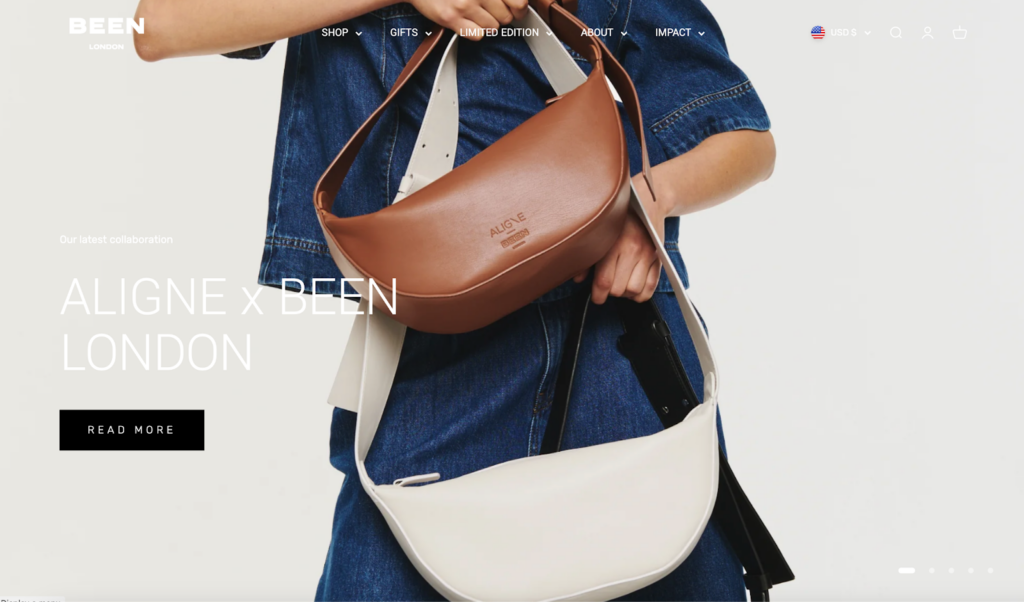
“We make versatile, timeless accessories from discarded materials that would otherwise go to landfill. In doing so, we are shifting the narrative around waste, showing what is possible with new innovations, and doing our part to protect nature.”
BEEN London
🌎
How do they ensure their sustainability?
BEEN London’s sustainability efforts focus on circularity. They start with reverting waste away from landfills and into making clothing accessories. BEEN London also uses a high proportion of low-impact materials, including GRS-certified recycled materials from post-consumer plastic bottles, fishing nets, plant-derived waste, used textiles, and leather offcuts and trimmings. Specifically, they source recycled leather, recycled nylon, recycled polyester, recycled cotton, and recycled fell. Additionally, they have some bags made with vegan leather alternatives, including Piñatex and AppleSkinTM, made with agricultural and industry waste. Beyond sourcing, BEEN London also considers circularity in every decision. Specifically, they strive to limit the amount of waste they create through their design process, such as opting for making mostly rectangular bags with which they can achieve near zero offcuts. Any offcuts that are created in the production process are collected and recycled. Furthermore, they design durable, versatile, seasonless, timeless pieces that consumers will still want to wear year after year. BEEN London helps extend product lifespan by offering repairs and incentivizing end-of-life recirculating. The design of their bags also covers end-of-life recycling, meaning that they preempt the dismantling challenges by stitching the lining to bags and using water-soluble glues or leaving their bags unlined. When reuse and repair are no longer an option, customers can send their bags back to BEEN London, where they will be dismantled for material recycling. Lastly, BEEN London strives to reduce their climate impact by opting for sea freight and offering zero-emission London delivery.
🌐
How do they ensure their ethics?
BEEN London makes everything locally in East London to ensure the highest level of transparency. They also trace all of their supply chain and visit their suppliers regularly.
🤝
Are they part of any giving-back programs?
BEEN London gives back by planting trees in the Amazon Rainforests. They plant a tree for every leather item in the color Rainforest Green ordered and sold. The impact of their reforestation efforts is tracked via Forest of BEEN London on their partner platform, Tree-Nation. Additionally, BEEN London supports Smart Works, a charity that gives women the confidence they need to reach their full potential by incentivizing customers to bring or mail (pre-paid) their pre-loved bags from any brand for recirculating.
🛍️
What is their product range?
- Best for: womenswear
- Product range: backpacks, handbags, satchels, totes, wallets, purses
- Price range: $$$
- Size range: n/a
Raven + Lily: Sustainably Designed and Responsibly Produced Handbags and Accessories

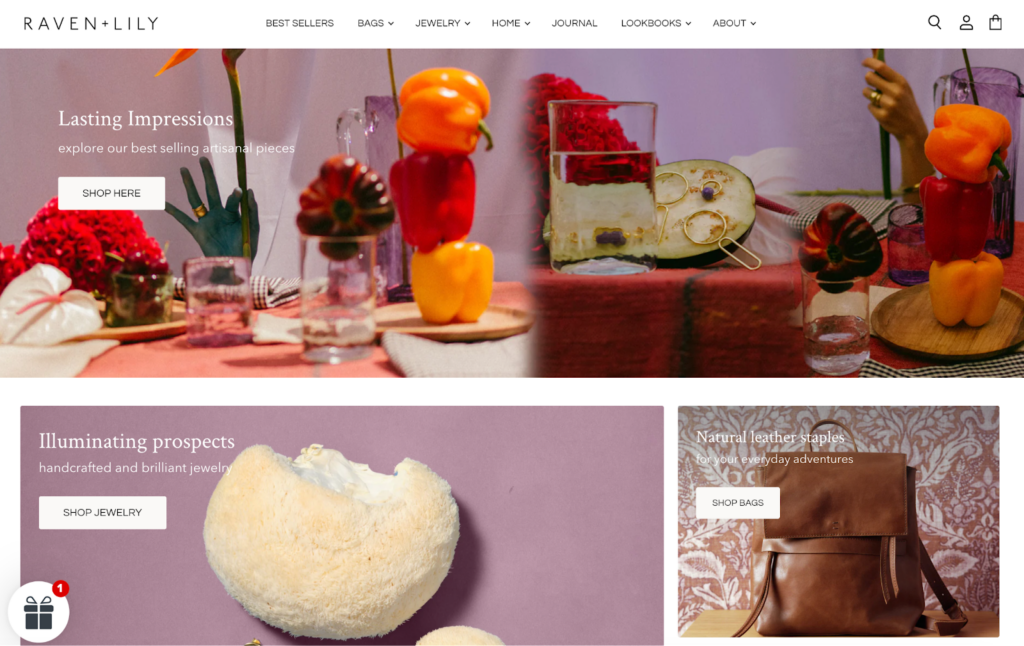
“All of our pieces are made in studios and nearly everything is handcrafted, which requires time and great skill. Designed and made to last, we believe less is more and favor longevity over trends.”
Raven + Lily
🌎
How do they ensure their sustainability?
Raven + Lily ensures sustainability by prioritizing locally sourced, biodegradable natural materials. They reduce their environmental impacts by upcycling leather remnants to make new handbags and upcycling brass and glass for their jewelry and homeware collections. Some Raven + Lily bags are made with low-impact cotton (organic cotton and recycled cotton). Additionally, they design products for longevity and to be appreciated year after year, reducing the life-cycle’s impact.
🌐
How do they ensure their ethics?
Raven + Lily partners with artisans and independent makers to produce their products. They also ensure payment of a living wage in the final stage of production while monitoring health and safety issues with an internal procedure. Lastly, they trace most of their supply chain.
🤝
Are they part of any giving-back programs?
Raven + Lily commits to giving back 1% of their sales to organizations that share their ethos and principles, including Women’s Fund at the Austin Community Foundation, the SAFE Alliance, and local and national organizations that support Black Lives Matter (NAACP, Reclaim the Block, and the African American Youth Harvest Foundation).
What is their clothing range?
- Best for: menswear, womenswear
- Product range: low-top sneakers, high-top sneakers, socks, accessories
- Price range: $$
- Size range: XS–XXL
Stella McCartney: Luxurious Fashion Clothes and Accessories Made Ethically and Sustainably

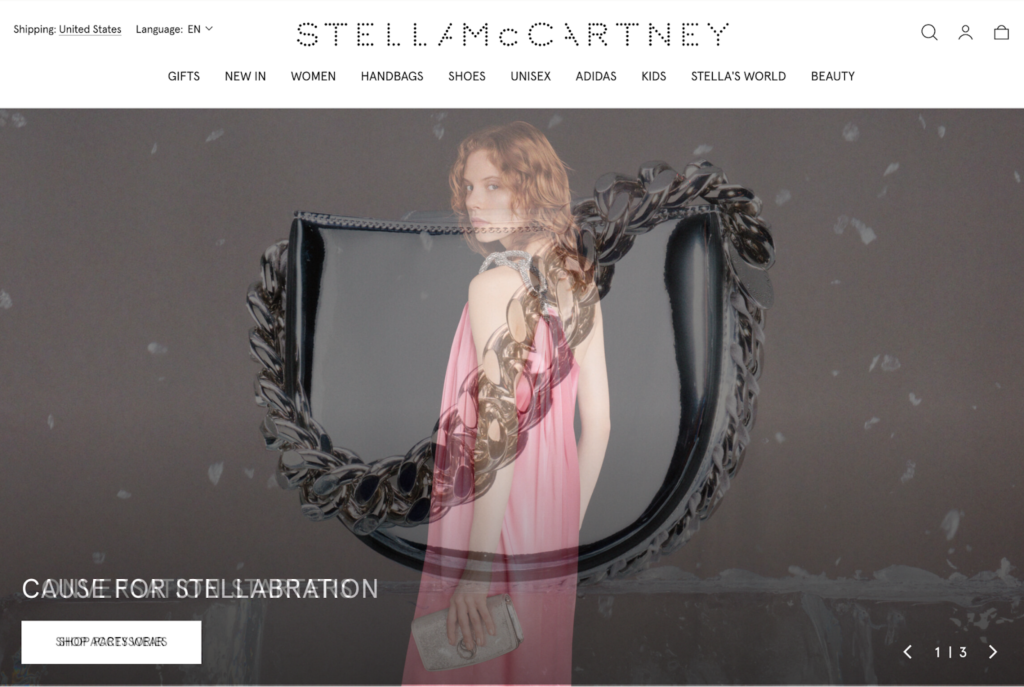
“We are committed to being an ethical, modern and honest company without compromising on luxury or quality.”
Stella McCartney
🌎
How do they ensure their sustainability?
Stella McCartney ensures their sustainability by making use of the most cutting-edge and progressive materials that aim to reduce the impact on the planet and are always cruelty-free while following the principles of circularity. They use a medium proportion of eco-friendly and innovative materials, including GOTS-certified organic cotton, cashmere from 100% recycled waste Re.Verso™, and low-impact plant-based alternative materials (BananaTex®, VEGEA, Mylo™, and MIRUM®). Specifically, they have invested in the parent company that makes MIRUM®, an entirely plastic-, fossil fuel- and water-free alternative to animal leather. Also, their Frayme Mylo™ is the world’s first-ever luxury handbag made with vegan leather crafted from mycelium, the root-like structures of fungi. Further down the life-cycle, Stella McCartney employs technological advances to trace their products, lower their manufacturing impact, and increase their circularity. Additionally, they exclusively use paper that is either FSC-certified or made from at least 50% recycled content in their packaging. In 2014, the brand launched Clevercare—a garment labeling system covering five simple areas of clothing care: washing, temperature, drying, ironing, and dry cleaning. These areas help extend the life of garments, decrease the number of pieces that end up in landfill, and reduce the life-cycle environmental footprint.
🌐
How do they ensure their ethics?
Stella McCartney commits to transparency across supply chains through diligent reporting, measuring, and tracking. Stella McCartney is a member of the Ethical Trading Initiative (ETI), a human rights organization driving force in ethical trade. They also trace most of their supply chain. Additionally, Stella McCartney uses lambswool and sheep wool certified with Responsible Wool Standard, appropriately addressing the welfare of sheep (and their calves) and the land they graze on.
🤝
Are they part of any giving-back programs?
Stella McCartney partners with and supports many charities, including but not limited to BioPlanet, Million Trees Miami, Naked Heart Foundation, Meat Free Monday, and Sea Shepherd.
🛍️
What is their product range?
- Best for: womenswear, menswear, kidswear
- Product range: shirts, skirts, denim, sweaters, swimwear, dresses, pants, jackets, blazers, hoodies, knitwear, tops, blouses, T-shirts, underwear, socks, shorts, jumpsuits, playsuits, shoes, accessories, plus-size
- Price range: $$$
behno: Luxury Handbag Brand With a Social Mission
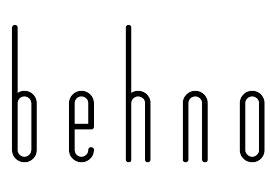
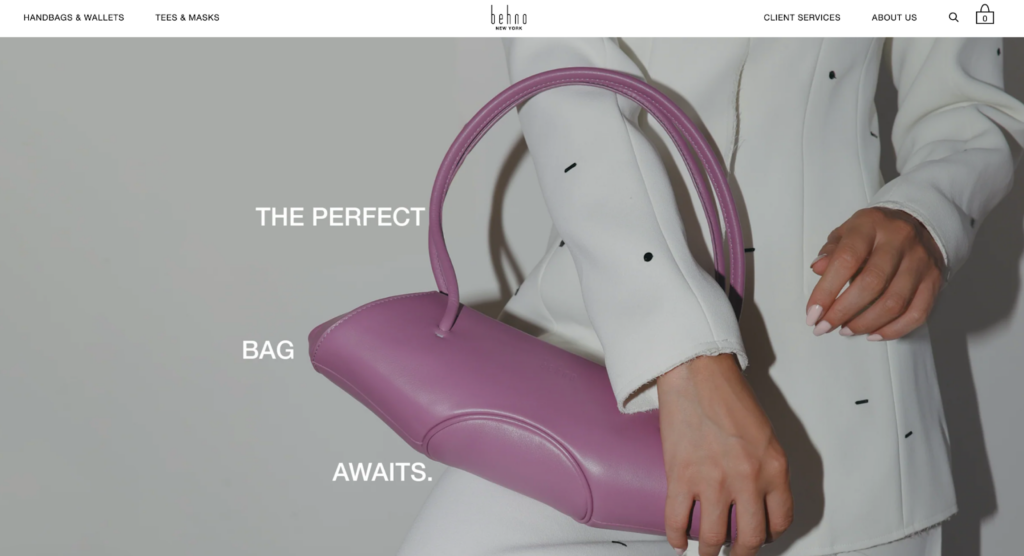
“The behno standard was built bottom-up, ensuring garment workers and artisans were at the center of the conversation.”
behno
🌎
How do they ensure their sustainability?
behno ensures their sustainability by sourcing durable and biodegradable textile materials, specifically leather and modal. The tanneries from which behno sources leather for their handbags are members of the Leather Working Group (LWG), ensuring the best practices in leather manufacturing regarding chemical management, water and energy consumption, and material traceability. For their clothing collection, behno uses modal fabrics made in Lenzing‘s closed-loop system, which has the highest level of sustainability—the dark green shirt—ranking in Canopy’s Hot Button Report. Beyond textile sourcing, behno also partners with Canopy to ensure that their packaging is made of recycled post-consumer content, and if any trees are involved, that they are not from ancient and endangered forests and are FSC certified. Further down the life-cycle in the manufacturing stage, they have built their own factory, MSA Ethos, which has solar discs generating its own electricity.
🌐
How do they ensure their ethics?
behno has built their own factory, MSA Ethos, according to “The behno Standard,” to ensure that garment workers and artisans crafting their handbags and clothes have a safe working space. In addition, they trace part of their supply chain and visit their suppliers regularly.
🤝
Are they part of any giving-back programs?
behno partners with the nonprofit Muni Seva Ashram (MSA) and helps address the needs of vulnerable populations with an on-site orphanage, center for mentally disabled women, and senior citizen home. Additionally, behno donates 10% of all sales from their Nanmota T-shirts to the Boys and Girls Club of America. They also collaborate with the National Down Syndrome Society (NDSS) to further the organization’s social impact, donating 20% of the revenue on all NDSS X BEHNO items.
🛍️
What is their product range?
- Best for: menswear, womenswear
- Product range: handbags, wallets, T-shirts,
- Price range: $$$
- Size range: 2XS–3XL
Mashu: Vegan Handbags Made Ethically and Sustainably
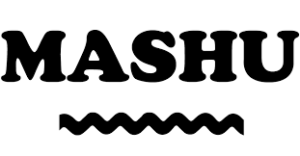
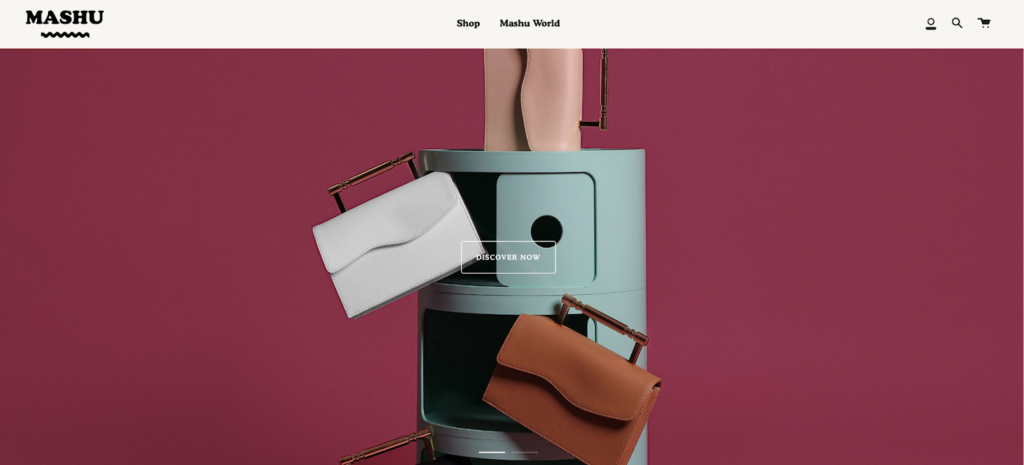
“We make sustainable handbags that marry contemporary design with traditional artisan craftsmanship, creating beautifully constructed accessories that feature vegan, sustainable and recyclable materials.”
Mashu
🌎
How do they ensure their sustainability?
Mashu ensures their sustainability by prioritizing textile options that are organic, plant-based, recycled, circular, and cruelty-free. For their handbags, they opt out of high-impact animal-derived leather and source vegan leather fabrics, including AppleSkinTM (made with apple pomace, a by-product of the juice industry), BioVeg (made with 73% bio-based content from non-GMO corn crops), and Piñatex (made with pineapple leaves, a by-product of the fruit industry). The lining of their bags is made with GOTS-certified organic cotton and recycled polyester, two of the most sustainable fabrics. Further down the life-cycle in the manufacturing stage, Mashu minimizes waste by limiting their production runs. They also take meaningful actions to reduce emissions from transportation and distribution. For example, Mashu sources most of their fabrics in the EU and manufactures locally in Greece to keep a relatively low transporting carbon footprint. Additionally, Mashu opts for carbon-neutral shipping on all orders. Lastly, they offer free repairs on all bags for life to reduce waste and extend the lifespan of their products, lowering the life-cycle’s environmental impacts.
🌐
How do they ensure their ethics?
Mashu upholds their suppliers to a Supplier Code of Conduct, which covers fair wages, health and safety, environmental management, and animal welfare. Additionally, they trace part of their supply chain, including the final production stage. Mashu is also transparent about the ecological footprint, materials, and packaging of each and every product. By way of their partnership with transparency platform Renoon, they provide precise information about each bag to help consumers make responsible choices.
🤝
Are they part of any giving-back programs?
Mashu is not known to be part of any giving-back programs.
🛍️
What is their product range?
- Best for: womenswear
- Product range: bags
- Price range: $$
- Size range: n/a
Deux Mains: Handmade Handbags From Repurposed Leather

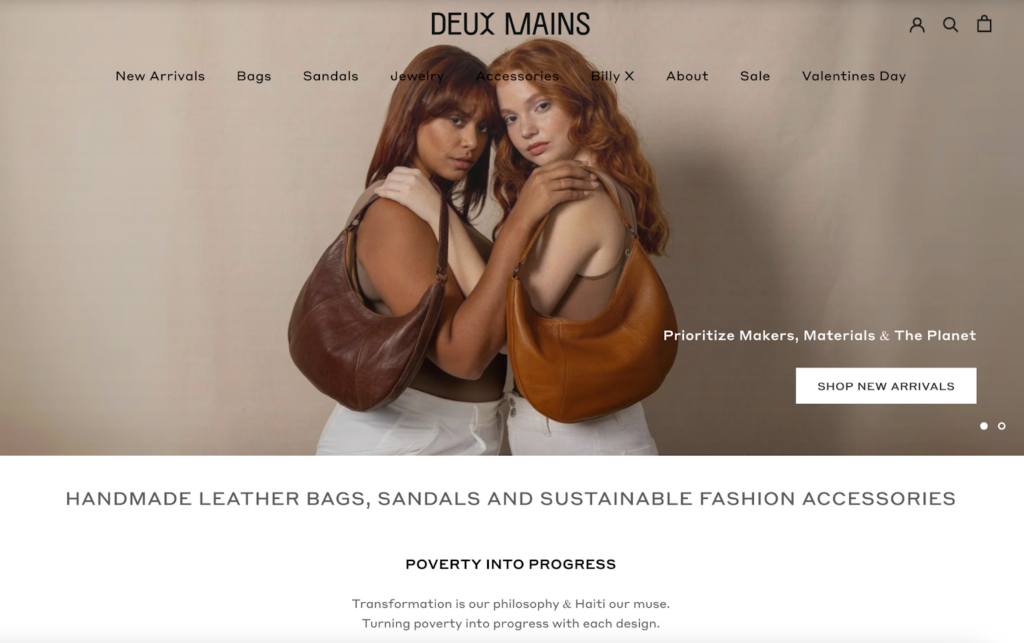
“It’s in the innovative way we design, make, craft and manufacture. It’s in the materials (found, recycled or upcycled) that we use. It’s in our choice of collaborator, and our approach to learning and training out people. Everything we do is touched by Haitian ingenuity, originality and flair.”
Deux Mains
🌎
How do they ensure their sustainability?
Deux Mains ensures their sustainability by sourcing responsible materials and handcrafting their products locally on the island of Haiti. They make handbags in small batches with deadstock leather, of which, the lining is made with organic cotton. Further down the life-cycle in the manufacturing stage, their bags and footwear are made by hand in a solar-powered factory, keeping their manufacturing carbon emissions low. Additionally, they use premium materials and careful craftsmanship to create long-lasting products, reducing the life-cycle’s impact.
🌐
How do they ensure their ethics?
Deux Mains is a mission-driven brand, setting out to improve social conditions in Haiti. They create empowering jobs in Haiti and share the island’s incredible craftsmanship with the world. They also trace most of their supply chain.
🤝
Are they part of any giving-back programs?
Deux Mains is not known to be part of any giving-back program.
🛍️
What is their product range?
- Best for: womenswear
- Product range: bags, sandals, jewelry
- Price range: $$
- Size range: XS–XXL
Why Is It Important to Buy Products Made of More Sustainable Fabrics
It is important to buy products made of more sustainable fabrics because a sustainable textile industry has a lower carbon footprint, helps save natural resources, and is better for forests, animals, and humans.
Buying Sustainable Fabrics Reduces Your Carbon Footprint
The production of clothing and footwear is estimated to contribute 10% of global greenhouse gas emissions—more than all international flights and shipping combined. If the fashion industry were a country, it would be the fourth largest emitter of carbon dioxide.
One way to reduce the carbon footprint of the clothes you buy is to opt for sustainable fabrics. Sustainable fabrics, which are often made with natural or recycled fibers, have relatively low carbon footprints compared to petroleum-based fabrics. For example, organic cotton made in the US has a carbon footprint of 2.35 kg CO2 (per ton of spun fiber)—a quarter of polyester’s carbon footprint.
Buying Sustainable Fabrics Reduces Demand For Natural Resources and Waste Management
The textile industry uses water and land to grow cotton and other fibers. It is estimated that 79 billion cubic meters of water were used for the sector worldwide in 2015. For example, producing a single cotton T-shirt requires as much water as one person drinks for 2.5 years (2,700 liters of fresh water).
Worse yet, the textile economy is vastly more linear than circular: the largest amount of resources used in clothes ended up in landfills (instead of being recycled to remake clothes). According to a report by the Ellen MacArthur Foundation,
- Less than 3% of materials used in the textile economy in 2015 came from recycled sources.
- In other words, more than 97% of resources used in making clothes are newly extracted.
When clothing items are disposed of within a short period of time—under a year in the case of half of the fast fashion clothes—the natural systems that provide raw materials for fabrics don’t have enough time to recover and regenerate, which could lead to ecological breakdown.
Sustainable fabrics are made with less water and emissions while lasting longer:
- Because they are durable, you don’t need to buy new clothes too often.
- Thus, you help reduce the pressure to extract more resources for making new items.
Similarly, making and consuming sustainable fabrics made with recycled materials reduces the demand for virgin materials while helping tackle waste management.
Buying Sustainable Fabrics Encourages Sustainable Management of Forests
Sustainable natural fiber fabrics are made with raw materials from forests and plantations that are sustainably managed, such as complying with FSC standards.
When you buy sustainable natural fiber fabrics, you discourage unsustainable forestry practices like illegal logging. You can help reduce deforestation, biodiversity loss, and the effects of climate change.
Buying Sustainable Fabrics Encourages Fairer Treatment of Animals
The fashion industry is rife with animal mistreatment when it comes to making animal-based fabrics like wool or silk. Every year, billions of animals suffer and die for clothing and accessories.
Buying sustainable vegan alternatives can help to reduce the pressure on raising more and more animals to meet the demand for animal-based fabrics while sacrificing their well-being and lives.
Suppose you have to buy fabrics made with, for example, wool or silk; make sure you only choose brands committed to cruelty-free products. In that case, you help advocate better treatments for animals raised within the textile industry.
Using Sustainable Fabrics Encourages Fairer Treatment of Textile Workers
Recent statistics from UNICEF estimated as many as 170 million child laborers worldwide, many of whom were engaged in some form of work in the textile industry. They don’t get paid minimum wages and often work long hours.
When you buy sustainable fabrics from brands transparent about the working conditions at their factories, you discourage the use of child labor and help promote better working conditions for textile workers.
How Can You Generally Buy More Sustainable Fabrics
The key to sustainably buying fabrics is to check on relevant environmental and original certifications.
For natural fabrics:
- Global Organic Textile Standard (GOTS): A globally recognized certification system that ensures a certain threshold of organic content has been met. It covers manufacturing, packaging, labeling, transportation, and distribution (but not what happens in the fields where crops are grown).
- USDA Certified Biobased Product: The USDA BioPreferred® Certification is a voluntary certification offered by the United States Department of Agriculture. The certification identifies products made from plants or other renewable materials.
- Ecolabel: Ecolabel is the official European Union voluntary label recognized worldwide for certified products with a guaranteed, independently verified low environmental impact. The label requires high environmental standards throughout the entire life-cycle: from raw material extraction through production and distribution to disposal. It also encourages companies to develop innovative, durable, easy-to-repair, and recyclable products.
For natural fiber semi-natural/semi-synthetic fabrics:
- Forest Stewardship Council: An FSC certification ensures that the wood (or wood-like material) comes from responsibly managed forests that provide environmental, social, and economic benefits.
There are two types of FSC Certification:- FSC Forest Management Certification, with a focus on the origin of the wood—the forest.
- FSC Chain of Custody Certification, which focuses on the path from the forest to the customer’s home.
- Program for Endorsement of Forest Certification: PEFC’s approaches to sustainable forest management are in line with protecting the forests globally and locally and making the certificate work for everyone. Getting a PEFC certification is strict enough to ensure the sustainable management of a forest is socially just, ecologically sound, and economically viable but attainable not only by big but small forest owners.
For recycled fabrics:
- Recycled Claim Standard (RCS): The Textile Exchange RCS was originally developed as an international, voluntary standard that sets requirements for third-party certification of Recycled input and chain of custody.
- The Global Recycled Standard (GRS): The Global Recycled Standard (GRS) is an international, voluntary, full product standard that sets requirements for third-party certification of Recycled Content, chain of custody, social and environmental practices, and chemical restrictions. It can be used for any product with more than 20% recycled material.
For all types of fabrics:
- STeP by OEKO-TEX®: STeP by OEKO-TEX® is an independent certification system for brands, retailers, and manufacturers from the textile and leather industry. It communicates organizational environmental measures, including reducing carbon footprint and water usage.
- OEKO-TEX® Standard 100: OEKO-TEX® labels aim to ensure that products pose no risk to human health (i.e., containing banned chemicals).
Some certifications that are signaling brands’ efforts toward lowered environmental impacts and a circular economy are:
- B Corp Certification: The label B Corp is a certification reserved for for-profit companies. Certified holders are assessed on their social and environmental impacts.
- Cradle2Cradle certification: Cradle2Cradle provides a standardized approach to material circularity. It assesses whether products have been suitably designed and made with the circular economy in mind covering five critical categories: material health, material reuse, renewable energy and carbon management, water stewardship, and social fairness.
Final Thoughts
Handbags can be one of the higher impact and less sustainable clothing accessories due to their conventional use of leather, which could be both high impact and unethical. Thus, it is important to shop with ethics and sustainability in mind when choosing your next bag.
By purchasing new or pre-loved handbags from brands that commit to sustainability, you support their mission to create a fairer and less harmful textile industry for all lives on Earth.
Here is the list (again) of the most sustainable handbag brands:
- HYER GOODS
- BOTTLETOP
- O My Bag
- Nisolo
- Elvis & Kresse
- Santos by Monica
- BEEN London
- Raven + Lily
- Stella McCartney
- behno
- Mashu
- Deux Mains
To make your use of these clothing accessories even more sustainable, follow these steps:
- Buy second-hand, recycled, or upcycled handbags made with low-impact materials.
- Keep handbags as long as possible.
- At the end-of-life of your handbags, upcycle the materials to extend their usage and arrange for them to be recycled or properly disposed of.
Stay impactful,

Sources
- Impactful Ninja: How Sustainable Are Leather Fabrics? A Life-Cycle Analysis
- Science Direct: Life-cycle assessment (LCA)
- MIT SMR: Strategic Sustainability Uses of Life-Cycle Analysis
- Hyer Goods: Home
- BOTTLETOP: Home
- O My Bag: Home
- Nisolo: Home
- Elvis & Kresse: Home
- Santos by Monica: Home
- BEEN London: Home
- Raven + Lily: Home
- Stella McCartney: Home
- behno: Home
- Mashu: Home
- Deux Mains: Home
- HYER GOODS: Bags
- HYER GOODS: Luxe Mini Bucket Bag
- HYER GOODS: Our Materials
- HYER GOODS: Luxury Leftovers
- HYER GOODS: Deadstock Leather Collection
- Impactful Ninja: How Sustainable Are Wool Fabrics? A Life-Cycle Analysis
- Impactful Ninja: How Sustainable Are Canvas Fabrics? A Life-Cycle Analysis
- HYER GOODS: Carbon Neutrality
- Good On You: Brand Directory | HYER GOODS
- HYER GOODS: Our Monthly Mission
- Malala Fund: Home
- WHO: Home
- No Kid Hungry: Home
- The Okra Project: Home
- Good On You: Brand Directory | BOTTLETOP
- BOTTLETOP: Sustainability
- BOTTLETOP: Amazona Mini Enamel
- Impactful Ninja: How Sustainable Are Leather Fabrics? A Life-Cycle Analysis
- Leather Working Group: Home
- BOTTLETOP: Artisan Production
- BOTTLETOP: Zero Deforestation Leather
- National Wildlife Federation: Home
- BOTTLETOP: BOTTLETOP Foundation
- BOTTLETOP: The BOTTLETOP Story
- BOTTLETOP: About #TOGETHERBAND Campaign
- B Corporation: O My Bag
- O My Bag: Handbags
- Impactful Ninja: How Sustainable Are Leather Fabrics? A Life-Cycle Analysis
- O My Bag: Carbon Strategy
- O My Bag: O My Bag Sustainability 2022
- FairClimateFund: Home
- O My Bag: Leather tanning process
- O My Bag: Sustainable Materials
- O My Bag: Tanneries
- O My Bag: Apple Leather
- Impactful Ninja: How Sustainable Are AppleSkinTM (Apple Eco Leather) Fabrics? A Life-Cycle Analysis
- Global Organic Textile Standard (GOTS): Home
- Impactful Ninja: How Sustainable Are Organic Cotton Fabrics? A Life-Cycle Analysis
- Textile Exchange: Global Recycle Standard
- Impactful Ninja: How Sustainable Are Recycled Cotton Fabrics? A Life-Cycle Analysis
- O My Bag: Shipping & Packaging
- Forest Stewardship Council: Home
- O My Bag: Second Chance Collection
- O My Bag: Perfectly Imperfect
- O My Bag: Pre-Loved
- O My Bag: Fair jobs
- O My Bag: Living wages
- O My Bag: Code of Conduct
- Good On You: Brand Directory | O My Bag
- International Labour Organization: ILO’s Declaration on Fundamental Principles and Rights at Work
- SA International: SA8000
- WFTO Guarantee System: Home
- O My Bag: Giving Back
- B Corporation: Nisolo
- Nisolo: Women’s Leather Handbags, Totes & More
- Nisolo: Sustainability
- Impactful Ninja: How Sustainable Are Leather Fabrics? A Life-Cycle Analysis
- Impactful Ninja: How Sustainable Are Synthetic Fabrics? A Life-Cycle Analysis
- Nisolo: Can leather be sustainable?
- Nisolo: Behind The Scenes of Our Operation
- Nisolo: SHOE RECLAMATION PROGRAM
- Ecosphere+: Home
- Nisolo: How Our 0% Net Carbon Commitment Combats Climate Change AND, WHY WE’RE CLIMATE NEUTRAL CERTIFIED
- CHANGE CLIMATE: Nisolo is Carbon Neutral Certified
- Nisolo: Supplier Code of Conduct
- Good On You: Brand Directory | Nisolo
- International Labour Organization: ILO’s Declaration on Fundamental Principles and Rights at Work
- Nisolo: Our Lowest Wage & The Lowest Wage Challenge
- Nisolo: Sustainability Facts Label
- Leather Working Group: Home
- B Corporation: Elvis & Kresse
- Elvis & Kresse: THE FUTURE OF LUXURY IS SUSTAINABLE, ETHICAL, RECLAIMED, OPEN, GENEROUS AND KIND
- Impactful Ninja: How Sustainable Are Leather Fabrics? A Life-Cycle Analysis
- Elvis & Kresse: Reclamation
- Impactful Ninja: How Sustainable Are Silk Fabrics? A Life-Cycle Analysis
- Elvis & Kresse: Fire & Hide Class Tote
- Elvis & Kresse: Transform
- Good On You: Brand Directory | Elvis & Kresse
- Elvis & Kresse: Fire-Hose Range
- The Fire Fighters Charity: Home
- Santos by Monica: Handbags
- Santos by Monica: Impact
- Santos by Monica: DESIGNED AND HANDMADE LOCALLY IN NYC
- Impactful Ninja: How Sustainable Are Organic Cotton Fabrics? A Life-Cycle Analysis
- Impactful Ninja: How Sustainable Are TENCELTM Fabrics? A Life-Cycle Analysis
- Impactful Ninja: How Sustainable Are Organic Hemp Fabrics? A Life-Cycle Analysis
- Forest Stewardship Council: Home
- Santos by Monica: SBM X ONE TREE PLANTED
- One Tree Planted: Home
- Impactful Ninja: How Sustainable Are Recycled Fabrics? A Life-Cycle Analysis
- Impactful Ninja: How Sustainable Are Vegan Leather? A Life-Cycle Analysis
- BEEN London: What is a circular economy?
- Good On You: Brand Directory | BEEN London
- Textile Exchange: Global Recycle Standard
- BEEN London: Our Innovative Materials
- Impactful Ninja: How Sustainable Are Recycled Nylon Fabrics? A Life-Cycle Analysis
- Impactful Ninja: How Sustainable Are Recycled Polyester Fabrics? A Life-Cycle Analysis
- Impactful Ninja: How Sustainable Are Recycled Cotton Fabrics? A Life-Cycle Analysis
- Impactful Ninja: How Sustainable Are Piñatex Fabrics? A Life-Cycle Analysis
- Impactful Ninja: How Sustainable Are AppleSkinTM (Apple Eco Leather) Fabrics? A Life-Cycle Analysis
- BEEN London: BLACK FRIDAY AND GIVING TUESDAY BAG SWAP
- BEEN London: Our Ethos
- BEEN London: Our tree planting initiative
- BEEN London: Rainforest Green
- Tree-Nation: BEEN London forest
- Smart Work: Home
- B Corporation: Raven + Lily
- Raven + Lily: Leather Totes
- Raven + Lily: Natural Leather Cross Bags
- Raven + Lily: By The Numbers
- Impactful Ninja: How Sustainable Are Organic Cotton Fabrics? A Life-Cycle Analysis
- Impactful Ninja: How Sustainable Are Recycled Cotton Fabrics? A Life-Cycle Analysis
- Raven + Lily: About Us
- Good On You: Brand Directory | Raven + Lily
- SAFE Alliance: Home
- African American Youth Harvest Foundation: Home
- Stella McCartney: Sustainability
- Stella McCartney: Circularity
- Good On You: Brand Directory | Stella McCartney
- Global Organic Textile Standard (GOTS): Home
- Stella McCartney: Organic cotton
- Stella McCartney: Recycled cashmere
- Stella McCartney: BananaTex®
- Stella McCartney: VEGEA
- Stella McCartney: Mylo™
- Stella McCartney: MIRUM®
- Stella McCartney: Frayme Mylo™
- Stella McCartney: Traceability and Blockchain Technology
- Stella McCartney: Metals
- Stella McCartney: Spotlight on Airslide
- Stella McCartney: Paper and Packaging
- Stella McCartney: Clevercare
- Stella McCartney: Measuring our impact
- Ethical Trading Initiative: Home
- Stella McCartney: Charities
- Million Trees Miami: Home
- Naked Heart Foundation: Home
- Meat Free Monday: Home
- Sea Shepherd: Home
- Impactful Ninja: How Sustainable Are Leather Fabrics? A Life-Cycle Analysis
- Impactful Ninja: How Sustainable Are Modal Fabrics? A Life-Cycle Analysis
- behno: OUR ETHICAL PHILOSOPHY
- Leather Working Group: Home
- Lenzing: Lenzing Modal
- Canopy: Hot Button Report
- Forest Stewardship Council: Home
- behno: AN EXPERIMENT: CONSTRUCTING MSA ETHOS
- Good On You: Brand Directory | behno
- behno: Nanmota T-shirts
- Boys and Girls Club of America: Home
- behno: FRONT-END PHILANTHROPY
- behno: NDSS X BEHNO
- Mashu: Materials
- Mashu: Our Mission
- Impactful Ninja: How Sustainable Are Vegan Leather? A Life-Cycle Analysis
- Impactful Ninja: How Sustainable Are AppleSkinTM (Apple Eco Leather) Fabrics? A Life-Cycle Analysis
- Impactful Ninja: How Sustainable Are Piñatex Fabrics? A Life-Cycle Analysis
- Global Organic Textile Standard (GOTS): Home
- Impactful Ninja: How Sustainable Are Organic Cotton Fabrics? A Life-Cycle Analysis
- Impactful Ninja: How Sustainable Are Recycled Polyester Fabrics? A Life-Cycle Analysis
- Impactful Ninja: 20 Most Sustainable Fabrics: The Full Life-Cycle Analysis
- Good On You: Brand Directory | Mashu
- Mashu: Our Story
- Mashu: Philippa 2 Creme Baguette Bag
- Mashu: Repair
- Mashu: Supplier Code of Conduct
- Renoon: Home
- Deux Mains: Women’s Leather Handbags
- Deux Mains: All Day Leather Tote
- Impactful Ninja: How Sustainable Are Organic Cotton Fabrics? A Life-Cycle Analysis
- Deux Mains: Our Factory
- Deux Mains: Our Story
- Good On You: Brand Directory | Deux Mains
- European Parliament: The impact of textile production and waste on the environment (infographic)
- Science Direct: The challenge of “Depeche Mode” in the fashion industry – Does the industry have the capacity to become sustainable through circular economic principles, a scoping review
- Science Direct: Carbon Footprint of Textile and Clothing Products
- European Parliament: Environmental impact of the textile and clothing industry
- European Parliament: What if fashion were good for the planet?
- Ellen MacArthur Foundation: A New Textiles Economy: Redesigning fashion’s future
- McKinsey: Style that’s sustainable: A new fast-fashion formula
- Forest Stewardship Council: Home
- Our World in Data: Deforestation and Forest Loss
- Our World in Data: Renewable Energy
- Peta: Animals Used For Clothing
- The Guardian: Child labour in the fashion supply chain
- Impactful Ninja: How Sustainable Are Natural Fabrics? A Life-Cycle Analysis
- Global Organic Textile Standard (GOTS): Home
- BioPreferred: WHAT IS THE BIOPREFERRED PROGRAM?
- European Commission: Environment | EU Ecolabel
- Impactful Ninja: How Sustainable Are Semi-Natural/Semi-Synthetic Fabrics? A Life-Cycle Analysis
- Forest Stewardship Council
- FSC Forest Management Certification
- FSC Chain of Custody Certification
- Textile Exchange: The RCS and GRS are designed to boost the use of recycled materials
- Program for Endorsement of Forest Certification
- Impactful Ninja: How Sustainable Are Recycled Fabrics? A Life-Cycle Analysis
- Textile Exchange: Recycled Claim Standard
- Textile Exchange: Global Recycled Standard
- OEKO-TEX: Certification according to STeP by OEKO-TEX®
- OEKO-TEX: OEKO-TEX® Standard 100
- B Corp Certification: Home
- C2CCertified: Home


